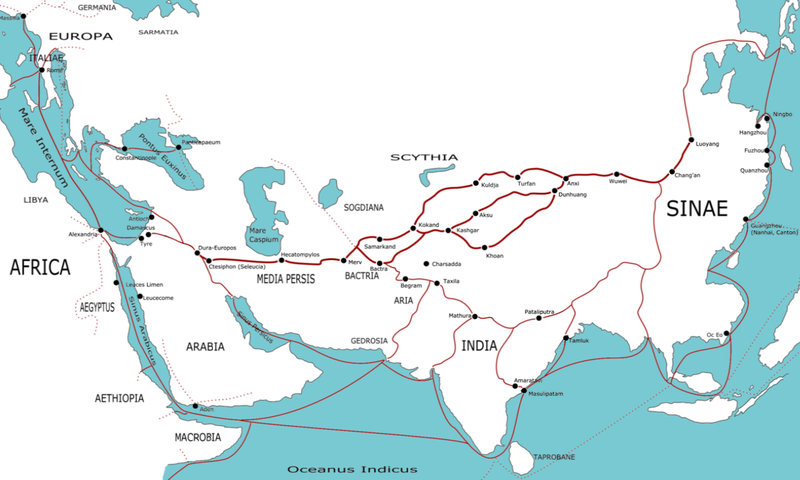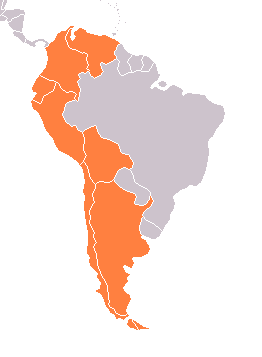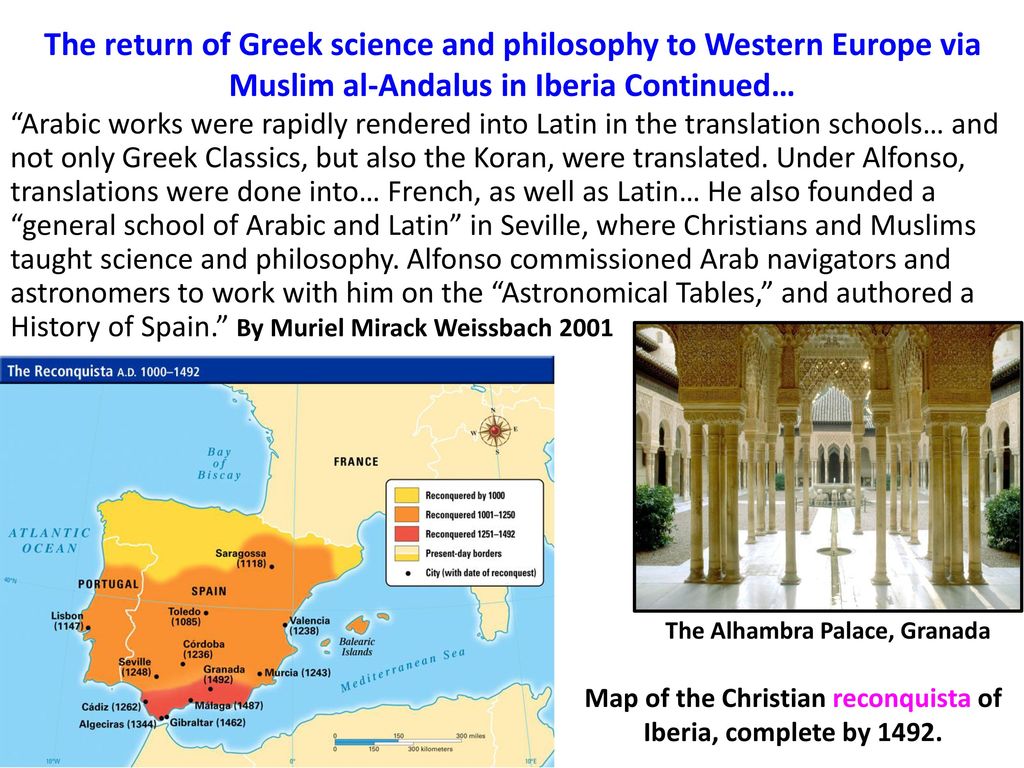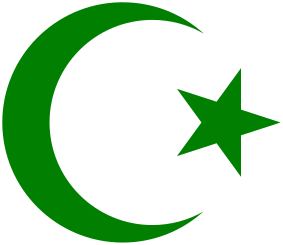Expansion and Intensification of Communication and Exchange Networks (600-1450 CE)
I. Improved transportation technologies and commercial practices led to an increased volume of trade, and expanded the geographic range of existing and newly-active trade networks.

A. Existing trade routes flourished and promoted the growth of powerful new trading cities like Karakorum, Samarqand, Baghdad.
[Required examples of existing trade routes: The Silk Roads, The Mediterranean Sea, The Trans-Saharan, The Indian Ocean basins]
The Trans-Saharan Gold Trade (7th to 14th Century)
Intensification of the trade along the Silk Roads
- Empire and state formation in China grew westward in the late centuries BCE, spreading the influence of Chinese culture and trade. Buddhism and Confucianism were well received in the area.
- Simultaneously, Alexander the Great's Empire was extending Hellenic influence (art, philosophy, religion, etc.) throughout the Middle East.
- The area west of the Taklamakan desert, east of the Caspian Sea and south of the Aral (what is now modern Afghanistan, Pakistan and Iran) became a melting pot, blending the cultures of east and the west for centuries. After the rise of Islam (beginning in 632 CE), the unification of states and empires in the Middle East allowed for expansion of trade between the two formally isolated (for all intents and purposes) entities.
The was no single road; the term "Silk Road" refers to the network of roads which together composed the system. As can be implied by its name, one of the chief commodities which traveled The Silk Road was silk itself.
"In addition to silk, the route carried many other precious commodities. Caravans heading towards China carried gold and other precious metals, ivory, precious stones, and glass, which was not manufactured in China until the fifth century. In the opposite direction furs, ceramics, jade, bronze objects, lacquer, and iron were carried. Many of these goods were bartered for others along the way, and objects often changed hands several times. There are no records of Roman traders being seen in Xi'an, nor Chinese merchants in Rome, though their goods were appreciated in both places. This would obviously have been in the interests of the Parthians and other middlemen, who took as large a profit from the change of hands as they could." [1]

The Silk Road during Mongol Rule
- The Mongols regularly relocated craftsmen from one section of their empire to another at whim; they highly valued Middle Eastern textiles and European crafts and often transplanted artisans from their westernmost territories to Mongolia/Northern China so they could have their luxuries close to home.
- In addition, the Mongols had strategically placed relay-stations to increase effective communication between outlying segments of their empire.
- The increased communication and military movement along these roads caused them to become much safer for merchants to travel along. [2]
- Land was divided into Khanates that facilitated Silk Road Trade.
 |
| Baghdad between 767 and 912 |
One such city that emerged as a new trading capital of the world was Baghdad.
- Founded in 762 of the Common Era, it had four roads all leading into the capital.
- Bazaars spread rapidly throughout as it grew to its pinnacle in the 9th century, where it was considered the most wealthy city in the world.
- Its economic prosperity paved the way for its impressive architectural feats including sprawling mosques and palaces.
The Mississippians of Cahokia, a visual by John Hendrix in the New York Times
B. New trade routes centering on Mesoamerica and the Andes developed.

- The period of regional organization in the Andes was brought to an end by the growth of two larger states, Tihuanaco and Huari. The religious symbols and artistic motifs associated with these two states were widely disseminated, possibly suggesting the creation of a second horizon. Tihuanaco extended its control over the southern Andes region, while Huari controlled the northern region. The period of dominance of these two states ended in the ninth century C.E., about the same time as the end of the classic period in Mesoamerica. The decline precipitated another round of regional development, as at Chimu on the coast.
- Contact between Mesoamerica and the Andes led to parallels in cultural development and the chronology of the emergence of more complex political systems. Much of this was probably funnelled through intermediate cultures in Central America. There were important differences. Peruvian cultures used metallurgy more fully than their Mesoamerican counterparts. The existence of the llama in the Andes allowed the development of a form of pastoralism there unknown in Mexico. Unlike the Maya, the cultures of the Andean highlands never developed a system of writing.
C. The growth of interregional trade in luxury goods was encouraged by significant innovations in previously existing transportation and commercial technologies, including more sophisticated caravan organization; use of the compass, astrolabe, and larger ship designs in sea travel; and new forms of credit and monetization.
[Teach one illustrative example of luxury goods, either from the list that follows or an example of your choice: Silk and cotton textiles, Porcelain, Spices, Precious metals and gems, Slaves, Exotic animals]
[Teach one illustrative example of caravan organization, either from the list that follows or an example of your choice: Caravanserai, Camel saddles]
[Teach one illustrative example of new forms of credit and monetization, either from the list that follows or an example of your choice: Bills of exchange, Credit, Checks, Banking houses]
As part of new techniques that were created this included the Mail system that emerged in Early Modern Period.
"In the early modern period, there was a transformation of the possibilities of super-regional communication and information delivery." Click here to read more about the postal system in Europe.
D. Commercial growth was also facilitated by state practices, trading organizations, and state-sponsored commercial infrastructures like the Grand Canal in China.
Special Topic Page on The Great Wall and the Grand Canal

Grand Canal of China, 1793
New state government procedures, such as minting coins and manufacturing paper money,
New trading organizations, such as Hanseatic league
[Teach one illustrative example of state practices, either from the list that follows or an example of your choice: Minting of coins, Use of paper money]
[Teach one illustrative example of trading organizations, either the one that follows or an example of your choice: Hanseatic League]
E. The expansion of empires facilitated Trans-Eurasian trade and communication as new peoples were drawn into their conquerors' economies and trade networks.
[Required examples of empires: China, The Byzantine Empire, The Caliphates, and The Mongols]
II. The movement of peoples caused environmental and linguistic effects.
Led to the spread or introduction of a new languages
ex. Bantu spread
ex. Swahili was a new language that developed in East Africa
ex. Arabic and Turkish spread
- The increase of deforestation in this era led to flooding and wood shortages in many areas of the world
- Roman Italy experienced a serious food shortage that can be connected to soil erosion issues
- China experienced more floods of their main rivers which devastated many of their farmlands
A. The expansion and intensification of long-distance trade routes often depended on environmental knowledge and technological adaptations to it.
[Teach one illustrative example of environmental knowledge and technological adaptations, either from the list that follows or an example of your choice: The way Scandinavian Vikings used their longships to travel in coastal and open waters as well as in rivers and estuaries, The way the Arabs and Berbers adapted camels to travel across and around the Sahara, The way Central Asian pastoral groups used horses to travel in the steppes]
B. Some migrations had a significant environmental impact.
Bantu-speaking people moved to Sub-Saharan Africa where they utilized agriculture techniques, changing the environmental landscape.Their use of iron technology also effected their migration and use of mining. Polynesian people expanded to new islands introducing new plants and food and domesticated the animals.
[Required examples of migration and their environmental impact: The migration of Bantu-speaking peoples who facilitated transmission of iron technologies and agricultural techniques in Sub-Saharan Africa AND The maritime migrations of the Polynesian peoples who cultivated transplanted foods and domesticated animals as they moved to new islands]
C. Some migrations and commercial contacts led to the diffusion of languages throughout a new region or the emergence of new languages.
[Teach one illustrative example of the diffusion of languages, either from the list below or an example of your choice: The spread of Bantu languages including Swahili, The spread of Turkic and Arabic languages]
III. Cross-cultural exchanges were fostered by the intensification of existing or the creation of new networks of trade and communication.
Buddhism, Islam, and Christianity all spread along trade routes including Saharan trade routes (Islam), the Silk Roads (Christianity, Buddhism, Islam) and the Indian ocean trade routes (Islam). Sufi missionaries spread Islam along the Silk Roads and other religions would soon follow suit. (Jesuits, Franciscans, etc later on).
A. Islam, based on the revelations of the prophet Muhammad, developed in the Arabian peninsula. The beliefs and practices of Islam reflected interactions among Jews, Christians, and Zoroastrians with the local Arabian peoples. Muslim rule expanded to many parts of Afro-Eurasia due to military expansion, and Islam subsequently expanded through the activities of merchants and missionaries.
For background on Islam and Christianity, go to the following Massachusetts World History standards:
Islamic Societies of the Middle East and North Africa: Religion, History and Culture, a course by Asma Afsaruddin, University of Notre Dame.
 Expansion of the Islamic Empire from the Stanford History Education Group
Expansion of the Islamic Empire from the Stanford History Education Group
Link to information about the course and consequences of the Crusades
B. In key places along important trade routes, merchants set up diasporic communities where they introduced their own cultural traditions into the indigenous culture.
[Teach one illustrative example of diasporic communities, either from the list that follows or an example of your choice: Muslim merchant communities in the Indian Ocean region, Chinese merchant communities in Southeast Asia, Sogdian merchant communities throughout Central Asia, Jewish communities in the Mediterranean, Indian Ocean basin, or along the Silk Roads]
C. The writings of certain interregional travelers illustrate both the extent and the limitations of intercultural knowledge and understanding.
[Teach one illustrative example of interregional travelers, either from the list that follows or an example of your choice: Ibn Battuta, Marco Polo, Xuanzang]
Ibn Battuta
The Travels of Ibn Battuta from University of California Berkeley
See Historical Biography page for Ibn Battuta, 14th Century Muslim Traveler
Marco Polo
Marco Polo at the court of Kubilai Kahn

Marco Polo was not the first European to ever travel to China, but he was one of the most influential.
- In the mid 1200s he traveled throughout the Mongol empire and recording what he saw.
- When he returned to Venice he wrote his epic, The Travels, which was widely read throughout Europe.
Kublai Kahn
Kublai Kahn: China's Favourite Barbarian, BBC News (October 2012)
13th Century Mongolian Ship Kublai Kahn Sent to Invade Japan Found, The Telegraph (July 3, 2015)
D. Increased cross-cultural interactions resulted in the diffusion of literary, artistic, and cultural traditions.
[Teach one illustrative example of the diffusion of literary, artistic and cultural traditions, either from the list that follows or an example of your choice: The influence of Neoconfucianism and Buddhism in East Asia, Hinduism and Buddhism in Southeast Asia, Islam in Sub-Saharan Africa and Southeast Asia, Toltec/Mexica and Inca traditions in Mesoamerica and Andean America]
E. Increased cross-cultural interactions also resulted in the diffusion of scientific and technological traditions.
[Teach one illustrative example of the diffusion of scientific and technological traditions, either from the list that follows or an example of your choice: The influence of Greek and Indian mathematics on Muslim scholars, The return of Greek science and philosophy to Western Europe via Muslim al-Andalus in Iberia, The spread of printing and gunpowder technologies from East Asia into the Islamic empires and Western Europe]
Link to Arabic and Islamic Mathematicians and Scientists
Link here for background on the The Scientific Revolution and the Scientific Method
The return of Greek science and philosophy to Western Europe via Muslim al-Andalus in Iberia:
Science in Al-Andalus - Arts and Science in Islamic Spain
Science and Scholarship in Al-Andalus

A Brief History of Zero
History of Zero and Place Value from The Math Forum
Roman and Arabic Numerals
Who invented zero?
A seemingly simple question highlights the difficulties scholars and researchers have in tracking an idea through history. Who invented zero guides a student through the intricacies of ideas spreading from culture to culture, person to person. Remind students that biases/prejudices can cloud research and not all sources are reliable (possible segue way into a lesson on the reliability of sources).
Possible resources to utilize:
https://en.wikipedia.org/wiki/0 (Wikipedia - background knowledge)
https://www.smithsonianmag.com/history/origin-number-zero-180953392/ (Smithsonian Magazine - comment on this article: "Sorry to disappoint you and am really surprised that the Smithsonian did not vet the article thoroughly..)
https://www.history.com/news/who-invented-the-zero (History.com)
https://www.nytimes.com/2017/10/07/opinion/sunday/who-invented-zero.html (NewYorkTimes - opinion piece)
https://www.livescience.com/27853-who-invented-zero.html (LiveScience - comment on this article: "this article is misleading and completely untrue.")
- The creation of UNESCO after World War II, to aide in the distribution of scientific knowledge with the idea to "gradually shape a-common, universal culture for humankind". in the modern world: Science, an essential part of culture.
"Culture is a-consistent and exhaustive set of specific significances that a-human group attaches to... they function as a glue to tie individuals together and as a badge to signal membership... culture is a-process of constant evolution of material artifacts"
IV. There was a diffusion of crops and pathogens throughout the Eastern Hemisphere along trade routes.
A. New foods and agricultural techniques were adopted in populated areas.
[Teach one illustrative example of new foods and agricultural techniques, either from the list that follows or an example of your choice: Bananas in Africa, New rice varieties in East Asia, The spread of cotton, sugar, and citrus throughout Dar al-Islam and the Mediterranean basin]
B. The spread of epidemic diseases, including the Black Death, followed the well established paths of trade and military conquest.
Spread of the Black death in Europe, 1347-1351

It is widely believed that the Bubonic Plague, also known as the Black Death, traveled with merchant caravans and on merchant ships from China all the way to London following established trade routes during the 700s CE and again during the mid 1300's CE.
- The Black Death wiped out nearly half of the population in Europe and China among other well-populated places.
- Mongolian invasions in Eastern Europe were aided by epidemics in Europe.
Link here for more on The Bubonic Plague and its Social and Economic Impacts
Additional Background on Islam
 With an estimated 1.6 billion adherents, Islam today is the world's second largest religion, behind only Christianity. As the newest of the world's three major monotheistic religions (Judaism, Christianity, Islam), Muslims consider their religion and their holy text (the Qur'an) to be the ultimate and final expression of God (or Allah, as Muslims refer to God).
With an estimated 1.6 billion adherents, Islam today is the world's second largest religion, behind only Christianity. As the newest of the world's three major monotheistic religions (Judaism, Christianity, Islam), Muslims consider their religion and their holy text (the Qur'an) to be the ultimate and final expression of God (or Allah, as Muslims refer to God).
To Muslims there had been several past prophets of God, including Adam, Abraham, Moses, Noah, and Jesus, but the Prophet Muhammad was God's final prophet. God's complete and final word, the Qur'an, is believed to have been verbally revealed to Muhammad through the archangel Gabriel, a messenger of God.
| The "star and crescent" is often used as a symbol for the Islamic faith |
Muhammad was remarkable for many reasons, not the least of them being that of the three main monotheistic religions of the day, he was the only prophet who lived to see the religion he inspired built and expanded. As a result, Muhammad was quoted not only through the Quran (which, in Muslim belief is not the translated words of Muhammad but the word of God through Muhammad), but also in several writings during Muhammad's prosthelytizing during and after his proclamations of the Quran.
Many of the words of Mohammed as speaker have been intermixed with or separated completely from the words of Muhammad as God's chosen voice, and confusion over meanings and translations have occurred as a result.
Islam spread not through the marriage of "pagan" faiths and newly-minted monotheistic religions as did Christianity, nor ever through the professions of miracles, but rather through concerted campaigns, be they military or socio-economic. Many kings (including Constantine), converted to Islam on the battlefield, at the end of a war with well-armed, well-trained Muslim warriors. Rulers were relatively quick to convert to Islam, and so Islam, unlike Judaism or Christianity, tended to not be the minority religion in the regions where it began, but was allowed and encouraged to take root and gain strength through mainstream support.
The Prophet Muhammad is actually closer to recorded, documented history than the other supposed prophets of God. In addition to the religious sources of the Qur'an and hadith, non-religious sources exist documenting his military and political leadership. It is known that he was born around 570 AD into a prominent family in Mecca (within present day Saudi Arabia), but was orphaned as a young child. In his early life he worked several jobs around Mecca, but his true passion was in the unrest and moral degeneration he saw in the community around him. He was highly spiritual, often retreating to caves for hours or even days at a time.
Muhammad is said to have first received revelations from Gabriel in 609 or 610 AD. On one of his personal retreats in the Cave of Hira, just outside Mecca, the archangel visited Muhammad and urged him to repeat certain verses from God, which would later become part of the Qur'an. Stunned by this experience, Muhammad began telling others what he saw as the only true path to salvation and social/moral improvement.
After three years of spreading this word, Muhammad began receiving yet more revelations from Gabriel, again supposedly directly from God (called Allah). These would eventually become the basis of the Qur'an and of the Islamic faith. Core beliefs included:
- Single god rather than many competing gods
- Universal obligations to all believers
- Protection against oppression
- Rich should provide charity to the poor
- Men, who are superior to women, had to respect, not mistreat them
- Political goal of an ordered community based on a single code of laws
At first Muhammad received only a small following, and his and his followers' beliefs were often persecuted by the pre-Islamic Arab majority. Arab religion before Islam usually involved the worship of several gods (polytheism), many of whom were thought to be protectors of specific tribes or families. This was clearly a sharp contrast to Muhammad's belief in a single all-powerful and perfect God who was the only path to salvation. Muhammad particularly objected to the frequent practice of idol worship. After a decade Muhammad continued to gain a greater following, and his followers became a minority the non-Muslims could no longer ignore. Eventually the Muslims were forced to move from Mecca to Medina (also today in Saudi Arabia). There were offers of peace between the two groups, but eventually there was armed conflict between the Muslims under Muhammad and the non-Muslims.
Muhammad's military campaign against non-Muslims was extremely successful, and his forces eventually reconquered Mecca from the non-Muslims, He moved on to conquer most of Arabia under the banner of Islam. This was the first political unification of Arabia, and by the end of the campaign the religion and beliefs of Islam had spread throughout the Arabian Peninsula as the dominant faith. Muhammad died in 632 AD soon after a pilgrimage to Mecca (this trip was the basis for the current Muslim practice of a Hajj, or pilgrimage). His political unification of Arabia under Islam set the stage for the Umayyad Caliphate, the first recognized Islamic Empire. This Empire would eventually become one of the largest in world history, stretching from modern-day Portugal to modern-day India.
The Rise of Islam and Trade
The growth of Islam led to a shift in international trade, as Muslims began to exert control over port cities in the Mediterranean. This had a major effect on other world empires, with the decline of the central African Aksum Empire in the 7th and 8th centuries being brought about partially by the Muslim seizing of port cities, which helped eliminate the influence of Aksum as a trading empire.
- Islam became a force in controlling the Red Sea, now the important naval passage for trade from the Mediterranean to the Indian Ocean, due in part to the favorable locations of Mecca and Medina.
- Trade by Muslims extended all the way to China by the ninth century, where there was less conflict than there was in the Mediterranean. Along with the Silk Road, the Islamic trading empire connected China and Europe via trade.
- As the Prophet Muhammad himself was a merchant, Islam was generally favorable to trade and trade flourished in its conquered territories.
[1] http://library.thinkquest.org/20443/silkroad.html
[2] http://www.silk-road.com/artl/paxmongolica.shtml
[3]http://occawlonline.pearsoned.com/bookbind/pubbooks/stearns_awl/chapter9/objectives/deluxe-content.html
[4]http://www.britannica.com/place/Baghdad
Comments (0)
You don't have permission to comment on this page.